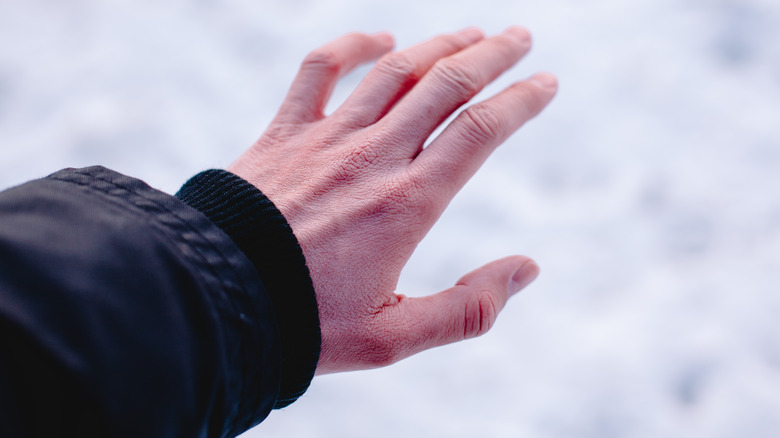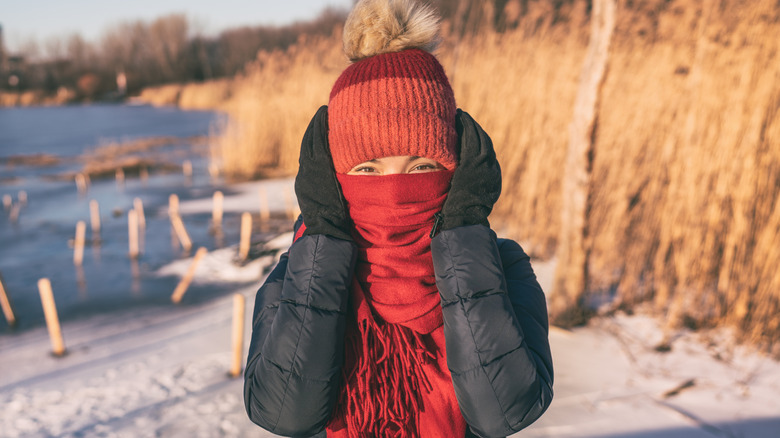The First Thing You Should Do If You Get Frostbite
Adventurous mountain climbers aren't the only ones susceptible to health risks associated with cold weather climates. Anyone exposed to extreme freezing temperatures for any length of time can fall prey to a host of adverse health effects. Citizens of Montreal facing an extreme cold warning in January 2022, reports Global News, were warned that stepping outdoors for only 5-10 minutes could induce frostbite. In cases like this, pets, children, seniors, people with chronic health conditions, and those without housing are especially vulnerable.
Frostbite is when exposure to sub-zero (minus 32 degrees Fahrenheit) temperatures results in damage to the skin and tissue underneath (via WebMD). It typically occurs on small, exposed areas of the body, such as the fingers, toes, ears, and nose. There are different stages of frostbite, progressively increasing in severity. Frostnip, an early indicator of potential frostbite, can be identified by patches of sore, red skin. The first stage of frostbite is characterized by skin turning yellow or white, accompanied by itching, tingling, burning, or stinging sensations. In the intermediate stage of frostbite, skin is hardened, shiny, and accompanied by fluid-filled blisters when thawed. In the most advanced stage of frostbite, the hardened skin becomes numb, cold, and black or blue in color.
Frostbite is considered a medical emergency. If emergency help isn't readily available, what should you do?
How to properly rewarm frostbitten skin
If frostbite is settling in, you'll want to seek medical help right away. While doing so, experts at the Mayo Clinic advise taking note of any accompanying symptoms that could indicate the onset of hypothermia. Such symptoms include confusion, drowsiness, slurred speech, excessive shivering, and fumbling hands.
When emergency help is delayed or unavailable, you should first take measures to prevent further skin damage. If you're outdoors, cover vulnerable areas such as the ears, cheeks, or nose with gloved hands — but be sure the gloves are not wet (via Mayo Clinic). If the affected area is your hands, experts suggest burrowing them under your armpits, one of the warmest spots on the body.
Next, remove yourself from the cold and get to a warm environment. Once inside, remove damp clothing and be mindful not to rub the tender skin (via Kids Health). Avoid dry heat sources like fireplaces or ovens, and instead soak the affected area for 30 minutes in warm water heated between 105 and 110 degrees (via Mayo Clinic). For areas of the face, gently apply a warm washcloth. Skin resuming its normal color and physical sensation are signs that the area is thawing. Once thawed, Kids Health advises inserting cotton balls between frostbitten toes and fingers and wrapping the area loosely with bandages to protect from further skin damage. Continue aftercare by drinking warm liquids, and if in pain, utilize over-the-counter pain relievers such as acetaminophen or ibuprofen.


